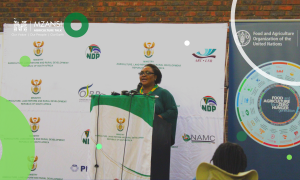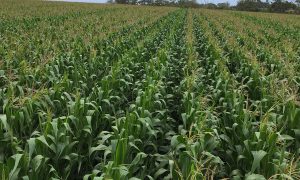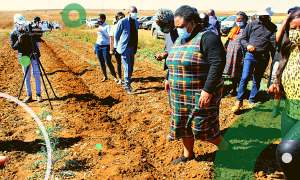By Tebogo Mashabela
The headline consumer inflation eased more that expected to 4.0% year-on-year (y/y) in July 2019, from 4.5% in June 2019. The 4.0% headline inflation rate was in fact the lowest in six months since a similar rate was recorded in January this year. This is well below the 4.5% midpoint of the South African Reserve Bank (SARB)’s 3% to 6% inflation target, thus providing a significant probability that the Reserve Bank might still see fit to reduce the repo rate again in mid-September 2019.
The decline in headline inflation in July 2019 is largely attributed to prices of transport (fuel) and food slowing down. There was expectation that headline inflation will remain at around 4.3% as there was somewhat upward pressure from increased electricity prices following Eskom’s implementation of NERSA-above inflation average price increase, but this was mostly offset by the decline in domestic fuel prices.

Food inflation (excluding non-alcoholic beverages) surprisingly decelerated for the first time after the past two consecutive months to 3.0% y/y in July 2019, from 3.2% in June 2019 and 2.8% in May 2019. If non-alcoholic beverages category is included, total food inflation decelerated to 3.4% in July 2019, from 3.7% and 3.2% in June 2019 and May 2019, respectively.
The deceleration of food inflation in July 2019 is in contrast with what was expected as food inflation was anticipated to continue its upward trend of recent months on the back of higher meat and dairy product prices linked to a rebuilding of cattle herds. Instead, inflation of meat and dairy products fell back slightly in July 2019. Following the ending of drought conditions and the dissipation of foot-and-mouth disease (FMD) in the meat industry, it was rational to expect that the inflation rates of meat and dairy products would post further increases which would exert upward pressure on the overall food inflation rate.
Instead, meat inflation rate decelerated to 0.2% in July 2019, from 0.3% in June 2019 and -0.9% in May 2019. Meat inflation started accelerating in May 2019 on the back of normalization in the meat industry after increased supplies in the domestic market resulting from a ban of meat exports by neighbouring states out of fear of FMD.
Milk, eggs and cheese inflation rate decelerated to 1.6% in July 2019, from 2.1% in June 2019. Oil and fats inflation rate decelerated to 2.9% in July 2019, from 3.5% in June 2019, its highest level in more than two and half years. In addition, the annual inflation rate of vegetables decelerated to 4.3% in July 2019, from 5.7% in June 2019.
On a negative front, the annual inflation rate of bread and cereals accelerated to 7.9% in July 2019, from 7.3% in June 2019 and highest 7.8% in May 2019. Drought conditions during the planting period in the north-western regions of the country, mainly North West and Free State, caused staple food commodity prices such as maize and soya to rise quite strongly over the past few months, hence the current high bread and cereals inflation rate of 7.9% in July 2019.
Food and non-alcoholic inflation (CPI perspective)

The annual inflation rate for sugar-related products also continued to accelerate to 8.7% in July 2019, from 8.2% in June 2019 and 6.8% in May 2019, taking it to its highest level in more than two years. This could be as a result of an increase in sugar tax, also known as Health Promotion Levy (HPL), in April 2019.
We are still of the opinion that food inflation will increase in coming months influenced by expected lower summer grain output this season compared with output of the last season. Crop Estimate Committee (CEC)’s sixth production forecast shows that a total of around 13.04 million tons of summer grain (i.e. maize, sunflower seed, soybeans, groundnuts, sorghum and dry beans) is expected this season, which is 13.9% (or 2.11 million tons) lower than that was produced in 2018. Maize output is so far expected to be 12.2% (or 1.53 million tons) lower compared with the 2018 output, with a significant reduction expected for white maize (-14.8% or over 960 000 tons) if compared with -9.4% or a reduction of over 560 000 tons for yellow maize which is key input in the animal feed.
Tebogo Mashabela is an Agricultural Economist by profession with two master’s degree, Master of Science (MSc) Agricultural Economics and Master of Business Administration (MBA).




















